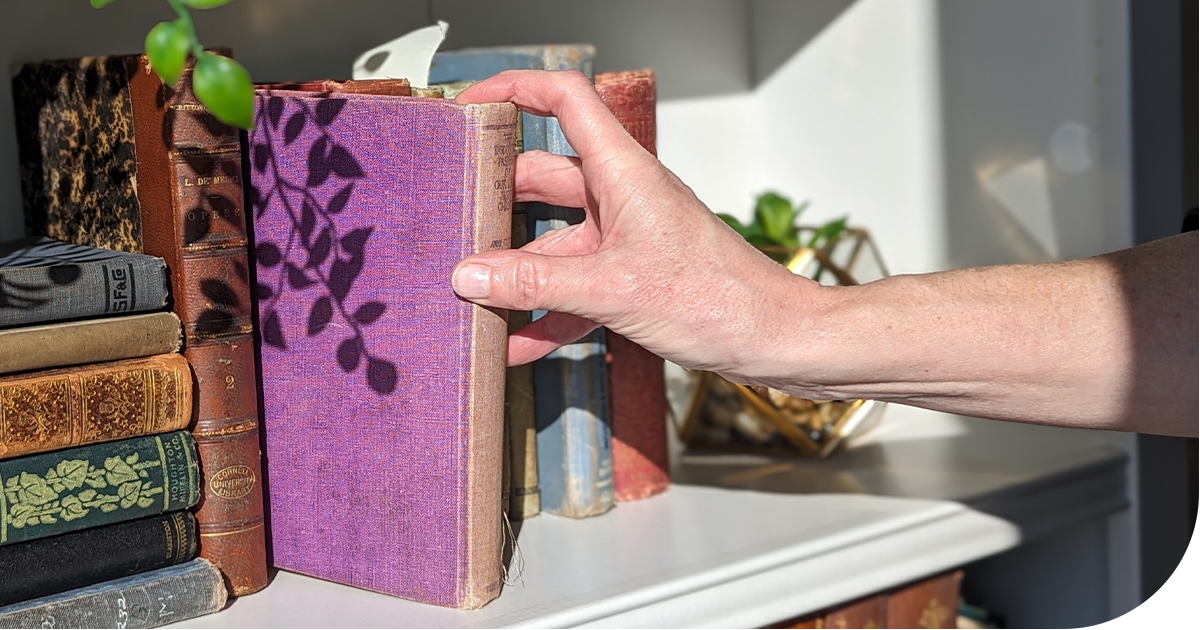Light damage poses a significant threat to museum collections. While light is necessary for viewing items on display, prolonged exposure can lead to fading, discoloration, and structural deterioration. From ancient artifacts to contemporary paintings, preserving these treasures requires a delicate balance between the public being able to view objects on display and protecting them from harm. Light damage is cumulative and cannot be reversed, so protecting items from excessive light exposure is critical.
Ultraviolet (UV)
Ultraviolet (UV) rays are super harmful to most materials, making fibers brittle and turning them yellow. UV light can also fade dyes and alter colors.
Visible light
Visible light can also cause damage to your artifacts, even though it's unavoidable. It's best to keep light levels low (around 5 to 15 foot-candles) to allow visitors to see the objects on display while protecting them.
A foot-candle is a unit of illumination that is equal to one lumen per square foot or 10.764 lux.
Infrared (IR)
Infrared (IR) light is another culprit, as it generates heat that can lead to cracking, lifting, and color changes in artifacts.
IR heating is often a problem with high-intensity incandescent lamps and direct sunlight. By controlling visible light, you can also limit the impact of IR light. Keeping an eye on temperature levels will help you assess the effects of IR light more effectively.
Mitigating light damage
There are many practical steps one can take to shield your objects from life-related damage.
- Opt for energy-efficient LED lights, which produce minimal heat and UV radiation compared to traditional bulbs.
- Install UV-filtering solutions for both lights and windows to reduce the amount of harmful UV radiation reaching artifacts.
- Invest in exhibit cases with UV-filtering glass or acrylic to protect items from harmful UV rays.
- In areas where artifacts are stored, try using timed switches or implementing a "low light" policy to minimize exposure time.
- Remember to rotate items on display and return them to dark storage to prevent fading from prolonged exposure.
- Upgrade lighting systems with dimmers to adjust the intensity of the light and establish recommended light levels based on artifact sensitivity.
- Incorporate motion detectors to automate the dimming and brightening of lights in storage and exhibit spaces.
- Store light-sensitive items in deep-lid boxes to prevent light from getting in.
- Utilize light monitoring devices to keep track of how long an object is on display and its cumulative light exposure to determine the amount of light damage.
-

UV-Filtering Tubes
for Fluorescent Bulbs
-

UV-Filtering Film
-

Gaylord Archival® Blue/Grey Barrier Board Clamshell Box
-

Gaylord Archival® Erie Table Leg Exhibit Case
-

Gaylord Archival® AXS™ Showcase System
-

Gaylord Archival® Little Gem Wall-Mount Exhibit Case
-

Testo 160 Wi-Fi Data Logger with Internal Temperature, Humidity, Visible Light & UV Radiation Sensors
-

Blue Scales Textile Fading Card
-

ELSEC Model 7650 Handheld Light Monitor
Helpful resources:
- Limiting Light Damage from the Library of Congress
- Reducing Light Damage in Collections from the Documentary Heritage & Preservation Services for New York (DHPSNY)
- Protections from Light Damage from Northeast Document Conservation Center (NEDCC)
- Tour of the Canadian Conservation Institute Online Light Damage Calculator Webinar from FAIC: Connecting to Collections Care
- Agent of Deterioration: Light, Ultraviolet and Infrared from the Canadian Conservation Institute (CCI)
- Light, Ultraviolet and Infrared from the American Museum of Natural History
- Light - The Agents of Deterioration | Art Conservation 101 video from Dig It With Raven
Agents of Deterioration
Light is just one of nine agents of deterioration that can damage your collections.

